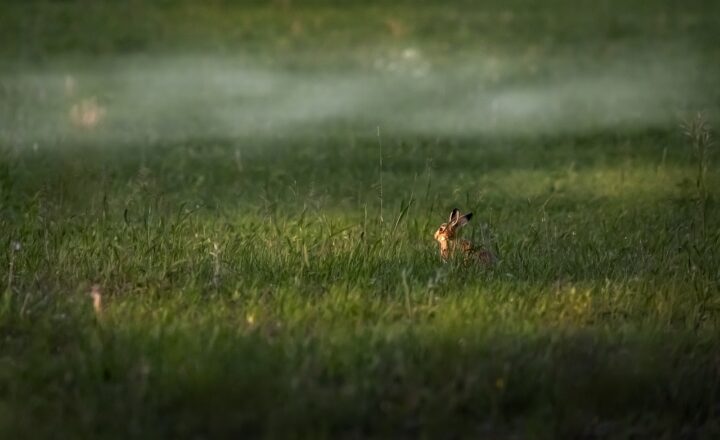Nature’s Wonder: The Most Bizarre Wildlife Facts You’ve Never Heard Before
November 18, 2024

The animal kingdom is astonishingly diverse, teeming with fascinating creatures that exhibit behaviors and characteristics often beyond imagination. From the depths of the oceans to the highest peaks of the mountains, wildlife displays a spectrum of adaptations that not only ensure survival but also defy the norms of our understanding. In this article, we’ll unveil some of the most bizarre wildlife facts that are likely to surprise and educate you about the wonders of nature.
1. The Immortal Jellyfish
Startlingly, the Turritopsis dohrnii, commonly referred to as the immortal jellyfish, is capable of reverting its cells back to an earlier state in its life cycle, essentially allowing it to regain its youthful form. When faced with threats or injury, this jellyfish can undergo a transformation that brings it back to its polyp stage, essentially cheating death. This unique ability has captured the interest of scientists and holds potential insights into aging processes.
2. The Heart of a Shrimp
Did you know that a shrimp’s heart is located in its head? This peculiar anatomical quirk is astonishing and reflects a range of unexpected adaptations in the marine world. In addition, shrimp have an open circulatory system, meaning that instead of blood flowing in veins, the fluid surrounds their organs, making it even more fascinating!
3. Flamboyant Cuttlefish: Masters of Disguise
Cuttlefish are known for their incredible ability to change color and texture to blend in with their surroundings, but the flamboyant cuttlefish takes this to a whole new level. This species employs a unique method of camouflage, displaying bright colors and pulsating patterns to both communicate and protect itself from predators. Not only can it change color in an instant, but it can also mimic the environment around it with astounding accuracy.
4. The Creepiest Sound in the Animal Kingdom
The eerie calls of the male Lyre Bird can mimic almost any sound it hears, including chainsaws, camera shutters, and human voices. This advanced vocal mimicry is not just for show; males perform these sounds to attract females during mating season. The complexity and variety of their calls demonstrate the incredible learning ability of this Australian bird, making them one of nature’s most impressive vocal performers.
5. The Hairstyle of the Pufferfish
Pufferfish have an unusual and interesting behavior that leaves them looking like nature’s own pieces of artwork. When threatened, they can inflate themselves dramatically, but what’s truly remarkable is how they also create intricate patterns in the sand to attract mates. These designs, made using their fins, can resemble everything from mesmerizing spirals to elaborate geometric shapes!
6. Tardigrades: The Ultimate Survivors
Tardigrades, or water bears, are microscopic organisms that can withstand extreme conditions that would be lethal to most life forms. They can survive temperatures ranging from nearly absolute zero to over 300 degrees Fahrenheit, endure extreme radiation, and even survive in the vacuum of space. Their resilience is mainly due to a unique state called cryptobiosis, where their metabolic processes slow to nearly zero.
7. The Six-Legged Snake
While it may sound like a myth, a six-legged snake was discovered in a cave in 2022. Dubbed the ‘movable bones,’ this genetic anomaly showcases nature’s endless possibilities and unpredictability. The extra legs allow for a different mode of locomotion, emphasizing how evolution can sometimes produce astonishing results.
8. The Glow of the Firefly
Fireflies possess a unique bioluminescent capability as they use specific chemicals to produce light, which helps attract mates. The light comes from a chemical reaction in the firefly’s abdomen and can be used to send signals and communicate. The beauty of the firefly’s glow often evokes magical imagery—a wonderful reminder of nature’s luminance.
9. A Fish That Can Walk
The mudskipper is a fish that has taken to land, able to go beyond traditional boundaries. This amphibious creature can use its pectoral fins to walk on land and even breathe through its skin while out of water. Mudskippers are often found in intertidal zones, showcasing how some species have adapted to thrive in both aquatic and terrestrial environments.
10. Honey Bees and Their Dance Communication
Honey bees communicate their findings to fellow hive members through an intricate dance known as the ‘waggle dance.’ This fascinating behavior indicates the direction and distance of a food source relative to the sun’s position. The precision and complexity of this form of communication emphasize the remarkable cognitive abilities of these small insects.
Conclusion
The animal kingdom is filled with extraordinary examples of life’s adaptability and complexity. The bizarre wildlife facts presented here merely scratch the surface of an awe-inspiring world that continues to intrigue scientists and enthusiasts alike. Nature never ceases to amaze us with its creativity, resilience, and unique adaptations that ensure the survival of diverse species. As we deepen our understanding of these wonders, let us appreciate and protect the extraordinary diversity of life that inhabits our planet.
By exploring these bizarre wildlife facts, we open a window into the myriad of wonders that are indeed all around us, waiting to be discovered.








